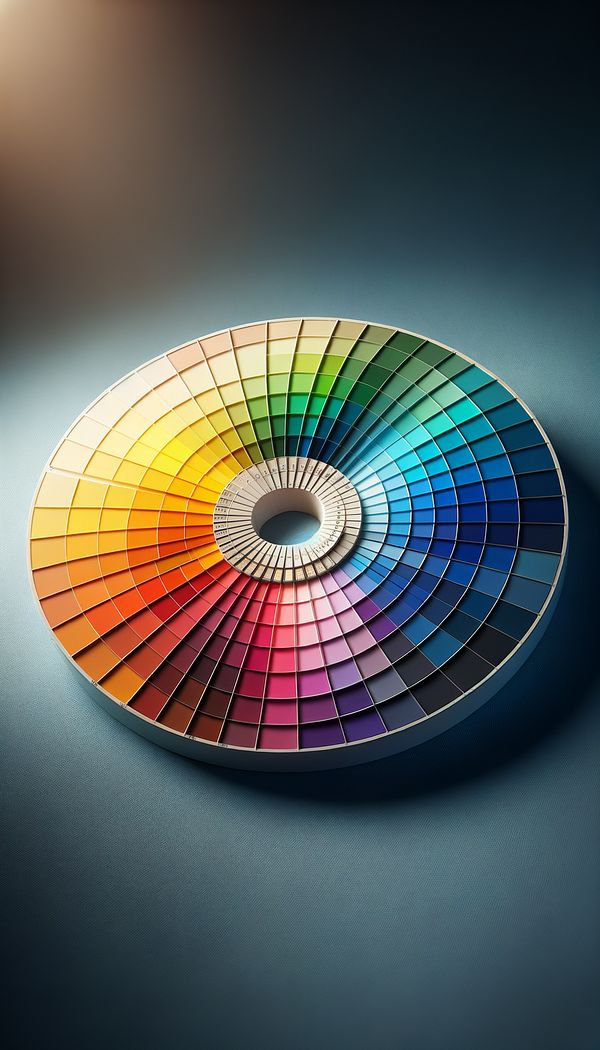What is Color Wheel?
The color wheel is a visual representation of colors arranged in a circle, showcasing the relationships between primary, secondary, and tertiary colors.
Description
The color wheel is an essential tool in the world of interior design, acting as a foundational guide for selecting color schemes and understanding color harmony. Originating from Sir Isaac Newton's color theory in the 17th century, this circular diagram arranges colors in a way that helps to visually explain how they relate to each other.
The wheel is typically divided into three categories of colors: primary (red, blue, and yellow), secondary (green, orange, and purple), which are created by mixing two primary colors, and tertiary colors, which are the result of mixing a primary and a secondary color. This systematic arrangement allows designers to easily create balanced and harmonious color schemes by utilizing concepts such as complementary (colors opposite each other on the wheel), analogous (colors next to each other on the wheel), and triadic (three colors evenly spaced around the wheel) relationships.
Understanding and utilizing the color wheel enables interior designers to craft spaces that evoke specific emotions, create illusions of space, or highlight architectural features. Knowing how to manipulate and combine colors using the color wheel can transform a room from dull to dynamic, ensuring that every design project resonates with both aesthetic appeal and functional purpose.
Usage
In interior design, the color wheel is used to guide the selection of color schemes for rooms and spaces. For example, a designer might choose a complementary color scheme for a living room, pairing blue and orange for a bold, vibrant effect. Alternatively, an analogous color scheme using hues of green and blue can create a calming and cohesive look. The color wheel also aids in selecting accent colors, ensuring they harmonize with the room's overall palette.
FAQs
-
Who invented the color wheel?
The color wheel was first developed by Sir Isaac Newton in 1666, as part of his experiments with prisms and light dispersion.
-
What are the primary colors on the color wheel?
The primary colors on the color wheel are red, blue, and yellow.
-
How do interior designers use the color wheel?
Interior designers use the color wheel to select and combine colors in a way that achieves balance and harmony in a space. They apply principles such as complementary, analogous, and triadic color schemes to create visually appealing and emotionally resonant interiors.
-
Can the color wheel help with selecting accent colors?
Yes, the color wheel is an invaluable tool for selecting accent colors that complement or contrast with the main color scheme of a space, enhancing the overall aesthetic appeal.
-
What is the importance of tertiary colors?
Tertiary colors, created by mixing a primary and a secondary color, play a crucial role in adding depth and complexity to color schemes, allowing for more nuanced and sophisticated designs.
Practical Application
When planning the color scheme of a room, start by selecting a dominant color that aligns with the desired mood or theme. Then, refer to the color wheel to find complementary, analogous, or triadic colors that will support and enhance this choice. Experiment with different color combinations and shades to discover what works best for the space, keeping in mind the effects of natural and artificial light on color perception. The color wheel is a dynamic and versatile tool, so don't be afraid to explore and play with different color relationships.
-
BohemianBohemian is a design style that embodies a carefree, eclectic aesthetic with a focus on rich patterns and vibrant colors.
-
Cane ChairA cane chair is a lightweight, durable chair made from woven rattan strips.
-
Dust RuffleA dust ruffle is a decorative piece of fabric designed to cover the lower portion of a bed frame and the area underneath.
-
OverlayOverlay in interior design refers to a decorative or functional layer added on top of another material or surface.
-
Carlton TableA Carlton Table is a versatile piece of accent furniture characterized by its distinctive crossed-leg design.
